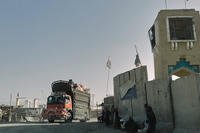For more than 40 years, the Army physical fitness test (APFT) was ideal for the running and endurance athlete, as it tested muscle stamina and cardio endurance with calisthenics and running events.
Then came the Army occupational physical assessment test (OPAT) and Army combat fitness test (ACFT).
The Army is using these tests to create a more well-rounded tactical athlete and changed its testing protocol to test strength, power, speed, agility, muscle stamina, grip and mobility, as well as endurance. This requires greater preparation, whether through playing sports in high school and college that require these fitness elements or through your own training programs.
The bottom line is that you will not pass these new fitness tests without a foundation of upper-body and lower-body strength training in your athletic history.
Here is an email from a former endurance athlete who does well with the older version of the APFT, but needs assistance with preparing for the newer OPAT and ACFT graded events:
Stew, I am fairly skinny with not much muscle (or fat, either). I guess I am a hard gainer? Do you have any advice for me as I prepare for the Army fitness tests in my future -- the older PFT, OPAT and the ACFT? The new ones look like I need to be lifting weights more than just doing push-ups, sit-ups and running. I can do well on the older PT test, but not sure where to start on the new ones. Thanks -- Armond.
Great question, Armond. Yes, the new changes require a different direction for your preparation journey before joining the Army. It would be beneficial for you to get in the weight room for a cycle to build muscle and get stronger.
In order to gain weight, you need to eat more (first add more good calories from carbs, then protein and fats). In order to build stronger muscle that will work for your future profession, you need to get on a program that focuses on many of the following exercises:
Build These Muscles for Better Scores on the New Army Fitness Tests
T push-ups or hand release: This is not only a chest exercise, but a good upper back exercise. You need to add more chest workouts to your upper-body day to handle this exercise. These will build a stronger chest, as well as the upper back. Add in bench presses, push-ups, dips and medicine-ball chest throws. See PT Reset for more ideas for the upper-back requirements. (ACFT)
Seated ball throw: Throw the medicine ball with a chest pass. To develop power, practice this event on push-up days. Add in bench presses to help build chest, shoulder and arm strength. (OPAT)
Having a strong chest, shoulders and triceps will help you with this exercise. This is a chest power exercise. Work on your speed with this movement.
Standing power throw: Throw the 10-pound medicine ball over your head and behind you -- but push forcefully with your legs, creating the power relay from your legs to your hips, shoulders, chest and arms. (See technique video) (ACFT)
Planking for 3:40 to max this test is tough and requires practice in the planking position. It is a safer exercise than either sit-ups or leg tucks. The beauty of the plank pose option for core stability testing is that it requires no additional grip strength, focusing almost entirely on core alone using an isometric flex.
Hanging knee-ups should be added to your pull-up sets. Add pull-ups to your upper-body days. Now, just add 10-15 knee-ups after pull-ups. Grip and core work are critical to this one. (ACFT)
Deadlift: Lift with the legs and hips, with a straight back (see technique video). Add deadlifting to your leg days. If you do not have a hex bar, use a barbell.
This exercise is critical for your Army career, as it prepares your body to be strong for common lifts and movements. It's not just for proper form to lift objects off the ground and rucking strength development. It will aid you as you test in both the OPAT and the ACFT.
Long jump: Squats and lunges will help you with this exercise, but you need to practice explosive leg power to maximize your test. Practice this extra exercise on leg days to maintain a solid performance on this OPAT test.
Beep test (shuttle run): On a basketball court or field, run back and forth on a set pace that increases each set. Start off easy as a warm-up for the first few sets, then pick up the pace so you have a few seconds to breathe and catch your breath.
Eventually, the rest periods will decrease, so your cardio conditioning needs to be strong to score well on this. You get that only if you practice the beep test. Do it on leg days or as a cardio day warmup. (OPAT)
250-meter sprint/drag/carry: All events are 25 meters out and back for time: (1) sprint, (2) 100-pound sled drag, (3) sprint, (4) two 40-pound kettlebell carry and (5) sprint. Practice sprinting 25 meters, running with 2 x 40-pound weights and dragging a sled for 50-meter sets.
The leg exercises above will prepare you for this, but adding this to a leg day is a smart practice as it truly challenges the entire body, heart and lungs. There is a lot to this event. See instructional video. (ACFT)
Two-mile timed run: Pace is vital. The most important thing is not to start off too fast. Learn your pace and set your goal by pacing yourself to the finish. For instance, if your goal is to run two miles in 14 minutes, you must run a seven-minute mile or a 1:45 quarter-mile. (APFT and ACFT)
Build up your running base over time, then start to add weight to prepare for rucking (carrying backpacks) when you join.
Consider putting all of these together with the Classic ACFT Pyramid Workout. You can scale the workout to make it easier by doing fewer sets or break it up into two days of upper body-only and leg-only exercises. Check out Army Fitness Programming if you need further assistance.
Stew Smith is a former Navy SEAL and fitness author certified as a Strength and Conditioning Specialist (CSCS) with the National Strength and Conditioning Association. Visit his Fitness eBook store if you’re looking to start a workout program to create a healthy lifestyle. Send your fitness questions to stew@stewsmith.com.
Want to Learn More About Military Life?
Whether you're thinking of joining the military, looking for fitness and basic training tips, or keeping up with military life and benefits, Military.com has you covered. Subscribe to Military.com to have military news, updates and resources delivered directly to your inbox.
















